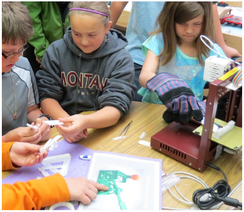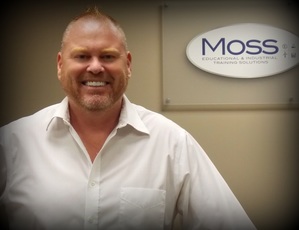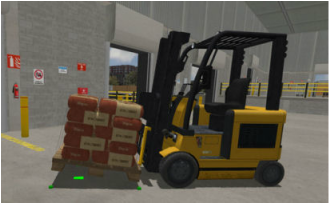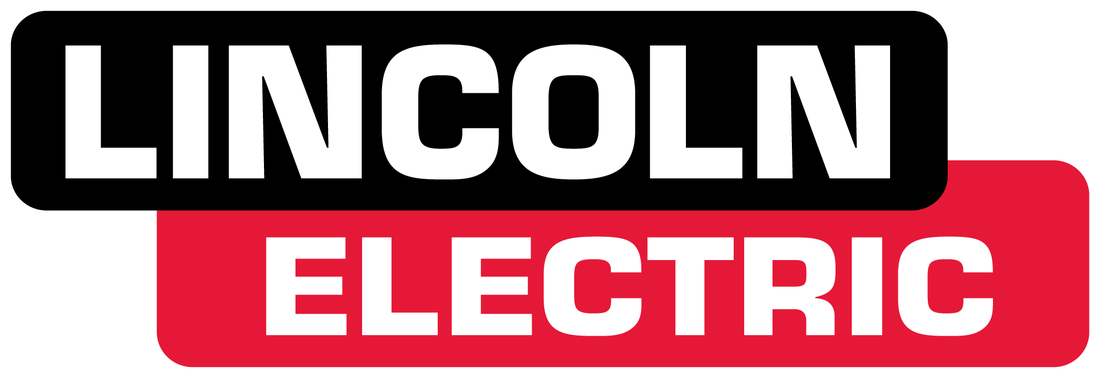 In what ways is 3D design and printing beneficial to student learning? Based on what teachers from around the globe are saying, working with 3D:
1 Comment
“You go into high school and everyone is talking to you about, well, you have got to go to college to be successful and you have to go to a four-year university, you will be nothing without a bachelor’s degree. It really puts so much pressure on your shoulders to do well at everything you do. And in high school, that was a really hard thing to deal with.” - Keihen Kitchen, student Like many students, Kitchen was looking for real, hands-on career opportunities. She was encouraged to attend a four-year university when a two-year technical school gave her the opportunities and the skills she needed for success in the engineering field.
She found an ideal program for her needs at Cuyahoga Community College in Cleveland, a school that uses Amatrol to teach industry-ready skills. They work closely with the local industries when developing coursework, and turned to Amatrol for the programs that aligned with the needs of the local workforce. Students like Kitchen are benefiting from being job ready with a two-year degree. Community Colleges and Technical Schools are filling an important niche in today’s workforce by offering targeted skills training programs that align with local business need. It’s a win-win for students and local industry alike. When the right curriculum is in place, whether welding programs, skills training or otherwise, students join the workforce prepared for the local job market. Students know they have stackable credentials, and employers can feel confident in the knowledge base of their new hires. Remind students that there are many paths to success. Read the full transcript of the program here:  Dan Sorenson has joined Moss as a Secondary Education Specialist, focused on STEM and CTE solutions. After working with engineering professionals and industrial manufacturers, Dan understands the importance of effective skills training. He is looking forward to working with districts in Iowa and Illinois to develop comprehensive skills training programs. Questions about your STEM or CTE programs? Contact Dan Sorenson at: P - (515) 508-9714 E - Dan@mossent.com  Your students have something to say about the direction their education is taking. Believe it – more students are taking an active role in crafting the direction of their training opportunities. Your students want to tell you a few things about the curriculum you choose. In this fast-paced, high-tech, consumer-driven world, students want to know that what they are learning today will be relevant in the real world. They also care about HOW they learn, and how you could make it better for them. (Here’s a hint: they prefer simulators in most situations!) Here are the top six things they have to say: “We learn just as effectively on a simulator as we do on the real thing.” Many educators worry that simulators aren’t life-like, and won’t provide adequate training for real situations. However, simulators have taken a page from the gaming industry and have built better graphics into modern-day simulators, making the simulations more true and engaging than ever before. Need proof? Check out the simulation on SimLog’s Forklift series here. “We need your feedback more than ever.” Whether you are using a welding simulator, a heavy equipment simulator, or something to teach pneumatics, simulation can play a key role in the education process. As an educator, you can identify specific opportunities for improvement at the spot where the student missed the target. Often, you can download a record of the simulation and coach directly to a student’s need. “We will be more engaged with the use of technology.” Integrating technology into the classroom drives engagement. Students today have grown up with laptops, smart phones, and mobile devices. They learn through the use of technology – classrooms are adapting to suit the way students learn benefits the student’s final outcomes. “The same tool can be used with multiple students.” Every educator is looking for a cost-effective way to replicate the same education from student to student. Furnishing each student with one-and-done supplies gets costly, and takes up storage space that a lot of schools don’t have. Tools like zSpace and CyberScience allow you to replicate the same dissection for multiple students – without sourcing dissection materials for each student. “We still get the hands on experience.” Many schools are afraid that the hands on experience will be lost with simulation software. However, the opposite is the case – when a school uses simulation software to teach the fundamentals, they can provide a much more meaningful experience for students who pursue advanced coursework. “We get it – budgets are tight.” Simulators are cost-effective – meaning that they can produce results with a much price tag. Students pursuing a variety of subject matters, though, can benefit from cost-effective simulation. From science to heavy machinery, there are simulators appropriate for the inquiring student, and can positively affect student outcomes. Simulators provide a more cost-effective, more sustainable alternative to the old methods. Ready to investigate? Check out Moss' cost-effective simulation options: Have you used simulation in your classroom? Tell us about it in the comments section!
|
AuthorYou have questions about STEM education? You're not alone! We're here to share ideas and provide thought-provoking commentary. Let us know your thoughts! Sign Up for Email Updates For Email Marketing you can trust. Categories
All
Archives
February 2017
|
- Home
-
K-12
- College
- Industry
- Certifications
-
Partners
- Afinia-3D Printing
- Amatrol-Manufacturing Training Equipment
- Apolo Studios- Welding Simulation
- Bantam Tools - CNC
- CEF-Custom Educational Furniture
- DAC Worldwide-Manufacturing Training Equipment
- Greene Manufacturing Inc - Furniture
- Iconic CNC
- Interior Concepts-Furniture
- MSSC Certifications
- MINDS-i Education
- Pitsco Education-STEM
- SimLog-Heavy Equipment Simulation
- Stokes Robotics
- Techno CNC Systems
- Universal Laser Systems
- VictoryXR - Virtual Reality
- WB Mfg - Furniture
- Funding
- Contact
- About
- Home
-
K-12
- College
- Industry
- Certifications
-
Partners
- Afinia-3D Printing
- Amatrol-Manufacturing Training Equipment
- Apolo Studios- Welding Simulation
- Bantam Tools - CNC
- CEF-Custom Educational Furniture
- DAC Worldwide-Manufacturing Training Equipment
- Greene Manufacturing Inc - Furniture
- Iconic CNC
- Interior Concepts-Furniture
- MSSC Certifications
- MINDS-i Education
- Pitsco Education-STEM
- SimLog-Heavy Equipment Simulation
- Stokes Robotics
- Techno CNC Systems
- Universal Laser Systems
- VictoryXR - Virtual Reality
- WB Mfg - Furniture
- Funding
- Contact
- About






 RSS Feed
RSS Feed
